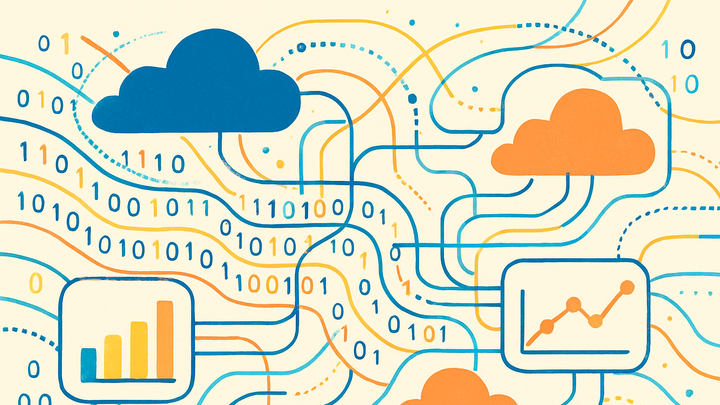Published on 2025-06-22T02:04:36Z
What is Big Data? Examples of Big Data in Analytics
Big Data refers to the massive volumes of structured and unstructured data generated by digital processes and user interactions. In the analytics industry, it encompasses the scale, speed, and diversity of information that businesses collect from websites, applications, and connected devices. Big Data is characterized by its high volume, rapid velocity, wide variety, uncertain veracity, and inherent value. These attributes require specialized storage, processing, and analysis tools to derive actionable insights at scale. Solutions like Google Analytics 4 and PlainSignal leverage Big Data techniques to handle billions of events, perform real-time analysis, and support data-driven decision-making. By understanding Big Data, organizations can uncover patterns, predict trends, and optimize user experiences across digital channels.
Big data
Massive volumes of diverse, fast-moving data processed by specialized tools to generate insights in analytics.
Key Characteristics of Big Data
Big Data is commonly defined by five core “Vs” that differentiate it from traditional datasets.
-
Volume
Refers to the enormous amount of data generated each second—from clickstreams and social media posts to sensor outputs and transaction logs.
-
Velocity
The speed at which data is created, collected, and processed—often in real time or near real time to support timely insights.
-
Variety
The different forms of data, including structured tables, semi-structured logs, unstructured text, images, and video.
-
Veracity
The trustworthiness and quality of data, which can be affected by inconsistencies, noise, or missing values.
-
Value
The actionable insights and business impact derived once Big Data is properly processed and analyzed.
Core Technologies and Tools
A range of platforms and frameworks has emerged to store, process, and analyze Big Data efficiently.
-
Data warehouses
Centralized repositories like Amazon Redshift or Google BigQuery optimized for complex analytical queries on structured data.
-
Data lakes
Scalable storage systems (e.g., AWS S3 or Azure Data Lake) that hold raw, structured, and unstructured data for flexible schema-on-read processing.
-
Distributed processing frameworks
Tools such as Apache Hadoop and Apache Spark that parallelize data processing across clusters for high throughput.
-
Cloud analytics platforms
Managed services like Databricks, AWS EMR, or Google Cloud Dataflow that simplify Big Data workflows and auto-scale resources.
Applications in Web Analytics
Modern analytics solutions harness Big Data to capture, store, and analyze vast event streams from websites and apps.
-
Google analytics 4 (GA4)
GA4 leverages Google’s Big Data infrastructure to collect and analyze user events across devices. Its event-driven model processes billions of interactions per day, enabling advanced funnels, predictive metrics, and cross-platform reporting.
-
PlainSignal
PlainSignal offers simple, cookie-free analytics built on Big Data streams. It captures page views and events in real time without personal identifiers. Example tracking code:
<link rel="preconnect" href="//eu.plainsignal.com/" crossorigin /> <script defer data-do="yourwebsitedomain.com" data-id="0GQV1xmtzQQ" data-api="//eu.plainsignal.com" src="//cdn.plainsignal.com/plainsignal-min.js"></script>
Challenges and Best Practices
Successful Big Data initiatives require attention to data quality, scalability, and compliance.
-
Data quality and governance
Implement validation, cleansing, and metadata management to ensure accuracy and maintain trust in insights.
-
Scalability and cost management
Use auto-scaling cloud services and data lifecycle policies to control storage costs while handling peak loads.
-
Privacy and compliance
Adopt privacy-by-design, anonymization techniques, and adhere to regulations like GDPR and CCPA when processing personal data.
